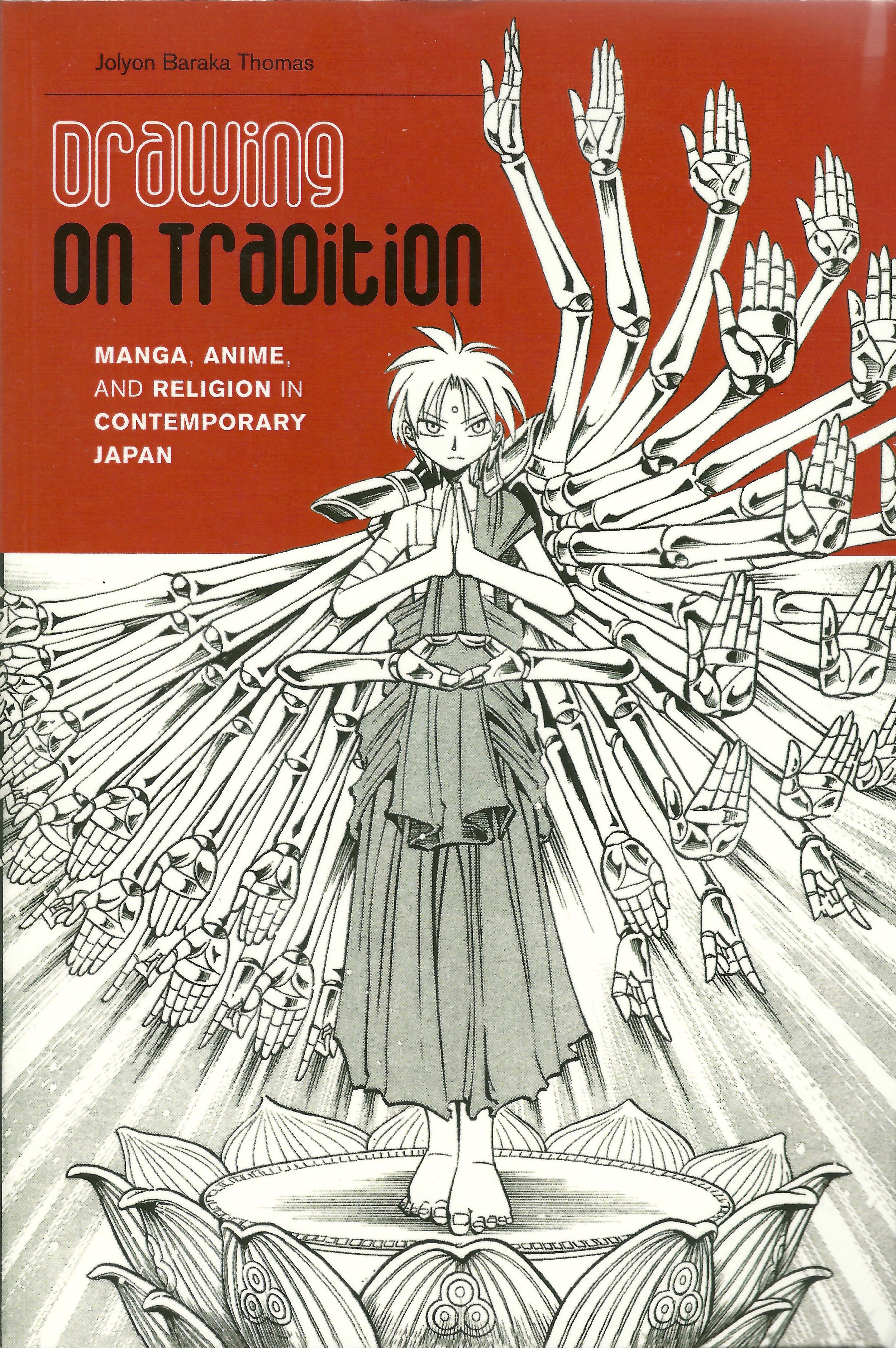Religion & Media
Drawing on Tradition
Manga, Anime, and Religion in Contemporary Japan
Promotional copy
Manga and anime (illustrated serial novels and animated films) are highly influential Japanese entertainment media that boast tremendous domestic consumption as well as worldwide distribution and an international audience. Drawing on Tradition examines religious aspects of the culture of manga and anime production and consumption through a methodological synthesis of narrative and visual analysis, history, and ethnography. Rather than merely describing the incidence of religions such as Buddhism or Shinto in these media, Jolyon Baraka Thomas shows that authors and audiences create and re-create “religious frames of mind” through their imaginative and ritualized interactions with illustrated worlds. Manga and anime therefore not only contribute to familiarity with traditional religious doctrines and imagery, but also allow authors, directors, and audiences to modify and elaborate upon such traditional tropes, sometimes creating hitherto unforeseen religious ideas and practices.
The book takes play seriously by highlighting these recursive relationships between recreation and religion, emphasizing throughout the double sense of play as entertainment and play as adulteration (i.e., the whimsical or parodic representation of religious figures, doctrines, and imagery). Building on recent developments in academic studies of manga and anime—as well as on recent advances in the study of religion as related to art and film—Thomas demonstrates that the specific aesthetic qualities and industrial dispositions of manga and anime invite practices of rendition and reception that can and do influence the ways that religious institutions and lay authors have attempted to captivate new audiences.
Drawing on Tradition will appeal to both the dilettante and the specialist: Fans and self-professed otaku will find an engaging academic perspective on often overlooked facets of the media and culture of manga and anime, while scholars and students of religion will discover a fresh approach to the complicated relationships between religion and visual media, religion and quotidian practice, and the putative differences between “traditional” and “new” religions.
“Audience members exhibit religious frames of mind when they interact with the characters and cosmologies of manga and anime in ways that reflect an imaginative mode of compositing in which illustrated worlds are superimposed on empirical reality. A religious frame of mind is present when a given narrative animates the audience, inspiring devotional or ritual activity such as composing devotional tablets (ema) at shrines addressed to favorite characters rather than to deities. It is visible when a given character becomes animate in an audience’s shared imaginary as a model to emulate, as in the case of the women I describe in Chapter 3 who take the fictional character Nausicaä as a role model. We can trace religious frames of mind when audience members project an illustrated place onto physical topography as a pilgrimage destination (such as Sailor Moon fans patronizing Hikawa Shrine in the Azabu Jūban district of Tokyo). We can visualize them when a specific geographic location takes on sacred significance in fan discussions as the alleged inspiration for an animated world—a place that is simultaneously fictional and real, inspired and inspiring (the island of Yakushima as the putative model for the sacred forest featured in Princess Mononoke).”
Below: An Autumn 2019 essay, “Manga, Anime, and Religion in Contemporary Japan” in the Risshō Kōseikai quarterly magazine Dharma World. Click on the leftmost thumbnail to read online, or download a PDF of the essay by clicking the button below.
“Drawing on Tradition: Manga, Anime and Religion in Contemporary Japan makes an important contribution to both the study of media and religion and to our understanding of how religious ideas are represented and recreated in contemporary Japan.”
Drawing on Tradition has been reviewed by the following outlets:
American Ethnologist
Animation
Anthropology Review Database
Monumenta Nipponica
Nova Religio
Pacific Affairs
Religious Studies in Japan




